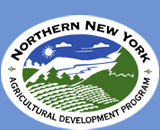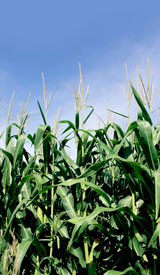March 17, 2008
Contact: Brian F. Chabot, Cornell University, 607-254-4234
Michael Farrell, Uihlein Maple Research Station, 518-523-9337
Maple Weekend 2008 March 29-30; Will It Be in Late January in 2080?
NNY Maple Producers Testing Early Tapping Opportunity
Maple Weekend in 2008 is March 29-30 as current weather patterns are
providing for good sap flow in the maple trees of Northern New York.
However, over the next century, if climate change models are correct, by
the year 2080 the annual maple production showcase at regional
sugarhouses in Northern New York could be January 29-30. The climate
patterns producing warmer winter weather and increased thawing events
are causing some NNY maple producers to test the tapping process earlier
in the winter.
Six maple producers have begun working with Brian F. Chabot of Cornell
University and Uihlein Maple Research Station Director Michael Farrell
to evaluate the effects of climate change on the industry that adds
roughly $1.7 million to Northern New York�s economy each year.
The Northern New York Agricultural Development Program Maple Advisory
Committee has given their highest priority to understanding the
opportunities and consequences of tapping sugar maples for their sap
earlier in the late winter-early spring.
�Maple producers have a legitimate concern about how they should be
adapting to climate warming trends. Long-term sap collection records on
the trees at the Uihlein Forest show that both the start and end of the
sap season has moved about a week earlier in the past 30 years with an
overall loss of three to four days of production,� Farrell says.
Chabot, director of the Cornell University Maple Program, says, �Climate
projection models suggest that the sap season with the freeze-thaw
conditions needed to make the sap run will continue to advance. Winter
as we now know it may be replaced by spring beginning in early January.�
Chabot�s research indicates that the number of sap flow days in
winter/early spring could increase in some areas in Northern New York
while the sap flow days in most of the state will decrease.
Maple producers depend on enough freeze-thaw days in the 6-10 weeks
after tapping their trees to collect sufficient sap to boil into syrup
and process into value-added products. It generally takes 40 gallons of
sap to make one gallon of syrup. Producers are increasingly processing
their syrup into value-added confections such as maple candies, maple
cream, granulated sugar, sauces and other products.
�The decision on when to tap is critical,� says Farrell. �If one taps
too early, the tapholes may dry up prematurely causing producers to miss
late season runs. However, delaying tapping until the traditional time
in late February/early March could result in producers missing the early
season runs.�
Chabot adds, �The maple producers who are beginning this new Northern
New York Agricultural Development Program project with us in 2008 will
help us determine the advantages and disadvantages of tapping earlier
and of staggering tapping as a risk management strategy. We are eager to
see how the diverse climate influences in Northern New York � from the
Great Lakes effect and the Adirondack Mountains �will impact project
results.�
The producers participating in the project are:
Cornell Cooperative Extension 4-H Program of St. Lawrence County,
Canton, NY
Champlain Valley Education Services, Plattsburg, NY
Heaven Hill Farm/Northwood School, Lake Placid, NY
- Jeff-Lewis BOCES Conservation Program, Glenfield, NY
Steven Rider, Lowville, NY
Rolland Thomas, Alder Brook Maple Products, Dickinson, NY.
The producers have agreed to tap 36 trees at several intervals and
record sap flow, volume, and sugar concentration. The data will be
tallied and compared to determine the optimum tapping time. Previous
research in Vermont suggests that January-tapped trees will perform as
well or better than March-tapped trees, but, Farrell says, �Time will
tell how these early taps perform at the six Northern New York sites
under our diverse climates across the region.�
Regional farmers representing all sectors of conventional and organic
agriculture from dairy, livestock and crops to maple, fruits, and
vegetables direct the applied on-farm research and educational outreach
efforts of the Northern New York Agricultural Development Program. For
more information on previous maple research conducted with funding from
the Northern New York Agricultural Development Program, go online to
www.nnyagdev.org.
#
Snapshot of the Northern New York Maple Industry
From Adjusted Table 118. Maple: Summary by County 2000, New York
Agricultural Statistics
Snapshot of the Northern New York
Maple Industry
From Adjusted Table 118. Maple:
Summary by County 2000, New York Agricultural Statistics
County # of Producers #
of gallons syrup Ave $/gal Ave Start/End of Season
Clinton
54 11,684 $25.55 March
5 to March 30
Essex
30 4,681 $27.35 March
1 to April 2
Franklin
27 3,555 $24.80
March 5 to April 5
Jefferson
25 2,003 $24.00
March 1 to March 24
Lewis
145 37,031 $22.55
February 29 to March 29
St. Lawrence 136
15,994 $23.35 March 1 to
March 26
Total or Range 417
74,948 $22.55 to $27.35 Feb. 29 to April 5, 2000



